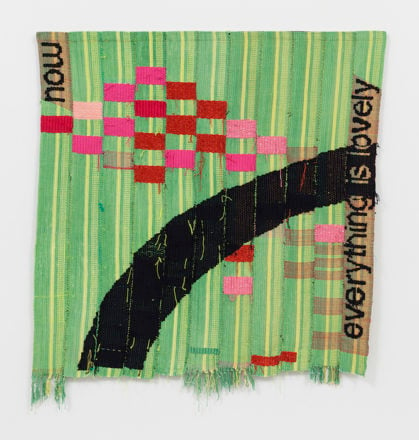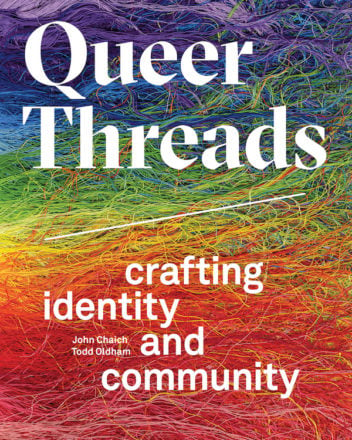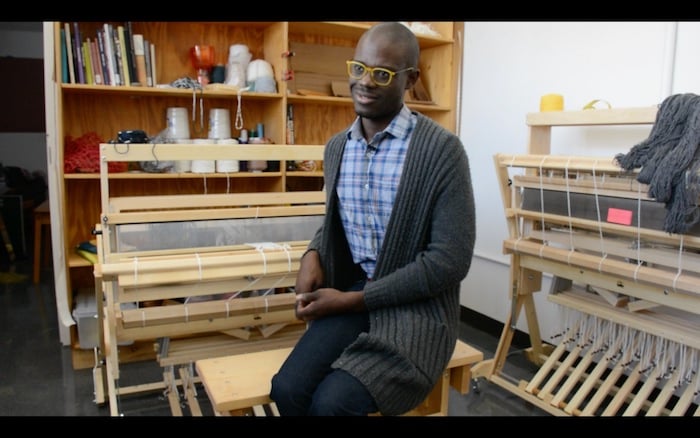LONG BEACH — Cal State Long Beach art professor Diedrick Brackens uses a loom to weave stories about racial injustice and the intersectionality of his identity as a queer black man living in America.
Brackens says weaving is a language.
“Language is very important,” Brackens says. “I don’t see a big distinction between writing, reading, and weaving. Weaving is just another language.”
RELATED: Meet Mina Barnes: A mosaic artist who uses her studio to create a sense of community
FIBER WEAVING TECHNIQUES
Brackens, a Leimert Park resident who joined Cal State Long Beach in the fall of 2015, teaches advanced undergraduate and graduate courses on fiber weaving techniques and is head of the art school’s renowned fiber program, which was launched more than 40 years ago.
TEXTILE ART, QUEER LIFE
Outside of the university, Brackens has exhibited his work in art galleries in Hollywood, Santa Monica, Oakland, and Kansas. Some of his themes have spotlighted police brutality, marriage equality, the history of slavery, and queer life in the United States.
For example, in his 2015 show “This is Real Life,” Brackens’ piece “Blat” featured provocative queer symbolism — A Band-Aid covered with a rainbow-hued bloodstain.
RELATED: ‘Undocumented Tales’ web series showcases undocumented, queer characters
Also, Brackens is among five Los Angeles-based artists featured in “Queer Threads: Crafting Identity and Community,” a 192-page coffee table book that surveys contemporary queer artists working in fiber and crafts such as crochet, embroidery, macramé, quilting, and sewing.
“From the groundbreaking Womanhouse at CalArts in 1972 to the fiber program at Cal State Long Beach to spaces like Branch Gallery and the Craft and Folk Art Museum today, Los Angeles has a vibrant connection to fiber art, textile, and crafts,” says “Queer Threads” editor John Chaich.
The five L.A. artists in the book, Chaich says, “merge this fiber art legacy and the history and visibility of the LGBTQ community here.”
In an interview with Q Voice News, Brackens, 28, talks about making art that’s “slippery,” police brutality in his art, and the intersectionality of his work.
Here are some excerpts.
Working with cotton and it’s beautiful, violent past
“Primarily, I work with cotton. I’m attracted to the material because it has a long history that is both beautiful and violent, particularly in the U.S.,” Brackens said. “It’s important to employ that material and a lot of other materials that come from everyday spaces. If I can get materials from a grocery store or hardware store, those places are ideal.”
Textile fibers represent the human body
“I use textiles as an actual metaphor for the body in the way I stitch things together to repair them or leave threads broken or hanging or how I dye them,” Brackens said. “I even use threads to mimic bodily fluids.”

Diedrick Brackens art piece “Get In Where You Fit In” explores the intersectionality of being black and queer. Photo: Courtesy Steve Turner Gallery.
“Slippery work” that explores blackness and queerness
“I challenge the work to be slippery,” Brackens said. “On one note, it might be beautiful and colorful, but I usually attempt to address things with weight. It might have a bit of pain, sadness, or drama in it. Being out in the world, particularly as a queer, black man, it can be a very different experience than other folks might have. Those two lenses of blackness and queerness come into the work.”
Making art accessible to queer audiences and black audiences
“Belonging to these two groups that have historically experienced discrimination produces particular challenges of how to make both groups able to read the work,” Brackens said.
Intersectionality of being black and queer
“There’s a work called ‘Get In Where You Fit In,’ and it takes the arc of the rainbow and uses it to frame the work,” Brackens said. “Instead of it being rainbow colored, I’ve done it in black. I’m really thinking about these relationships of my queerness to my blackness. Is there a moment where I have to pick and choose? No.”
His past exhibit “No More Trauma” symbolized police brutality
“ ‘No More Trauma’ was a direct response to the way black bodies in the media are these sights of pain or death. Particularly, with all the instances of police killing young black folks,” Brackens said. “I worked with that imagery a lot in the work in very abstract ways.”
Keeping the art of weaving alive
“Being a part of a medium that’s not as heavily practiced as painting or photography, it feels really important to keep the art alive,” Brackens said. “It’s important for me to recontextualize weaving for folks and let them see that there are ways to use the medium for things that we can talk about.”
Staff writer Phillip Zonkel contributed to this report.


